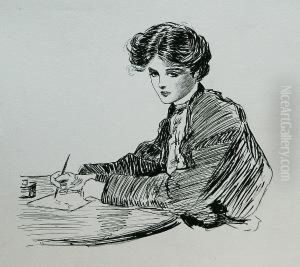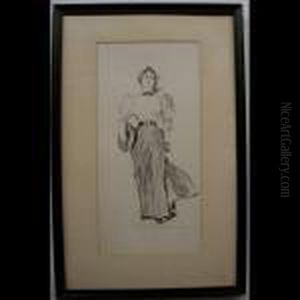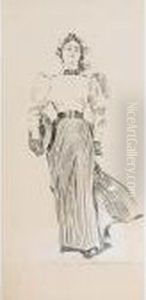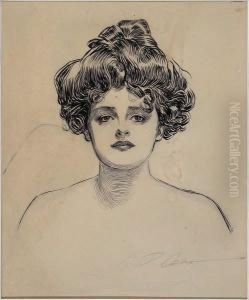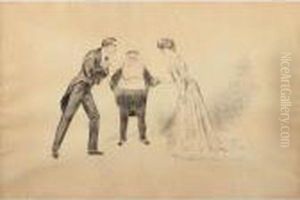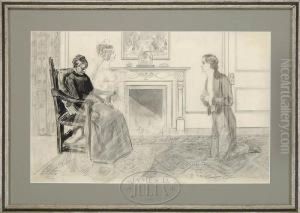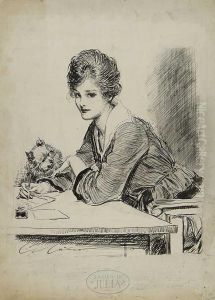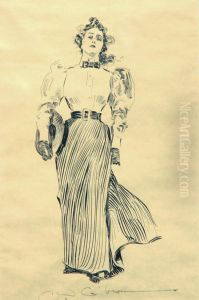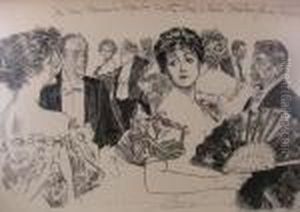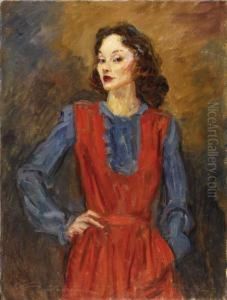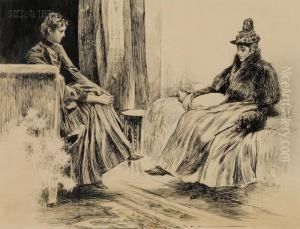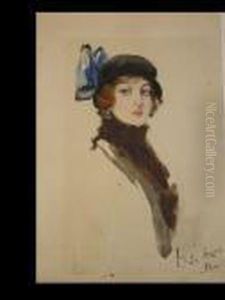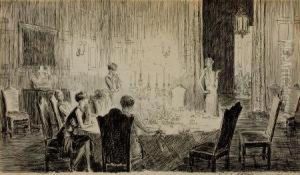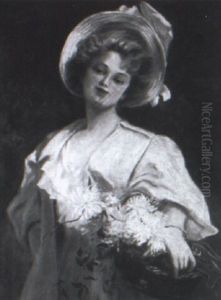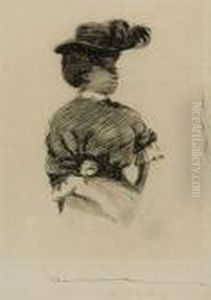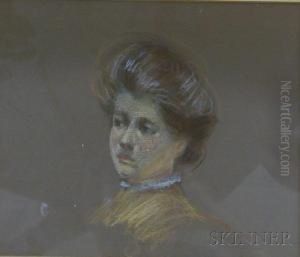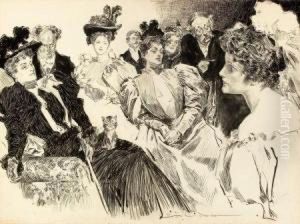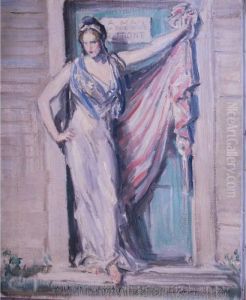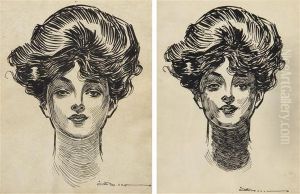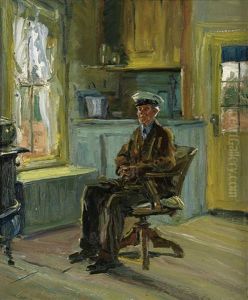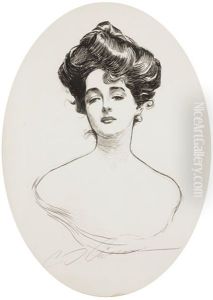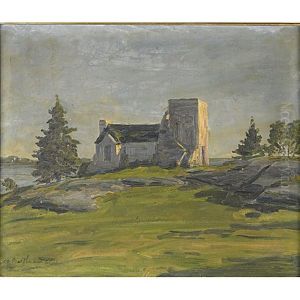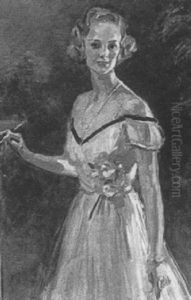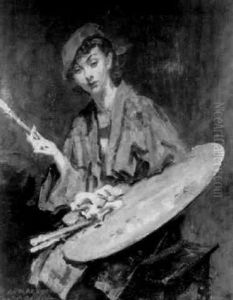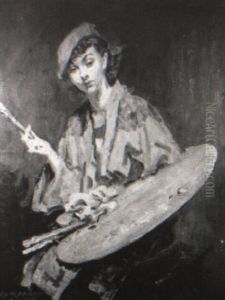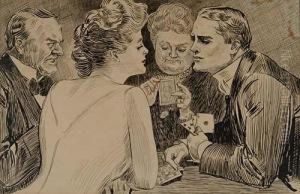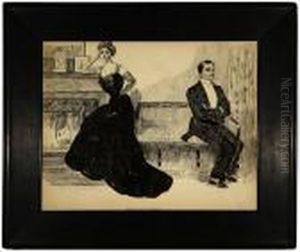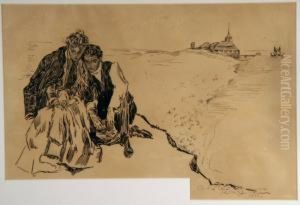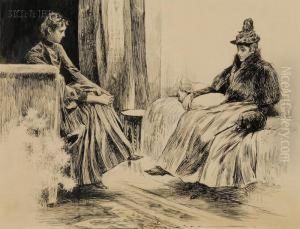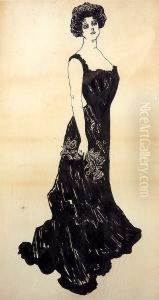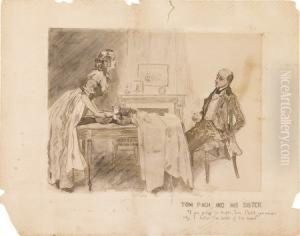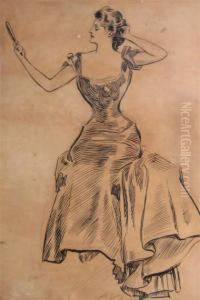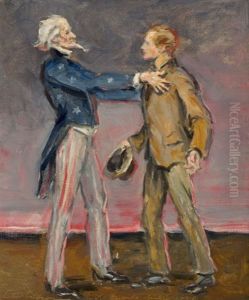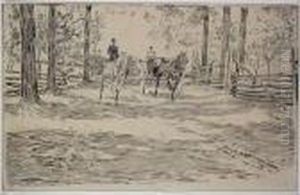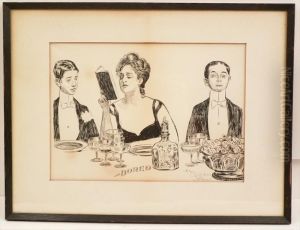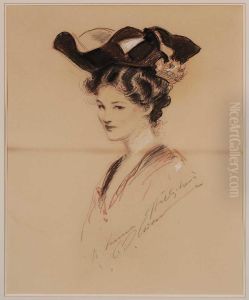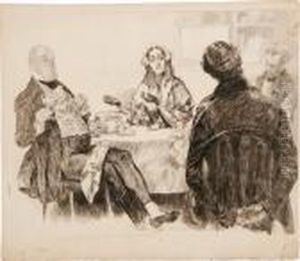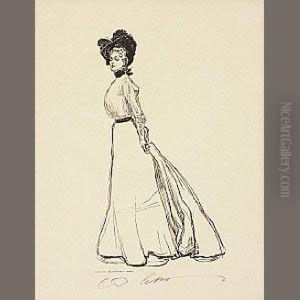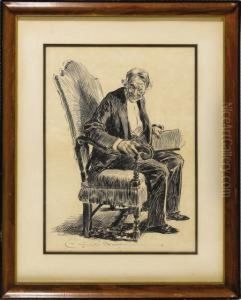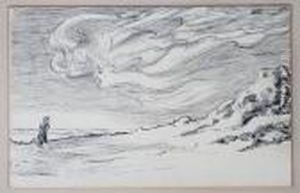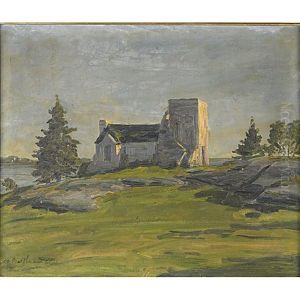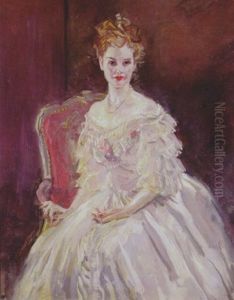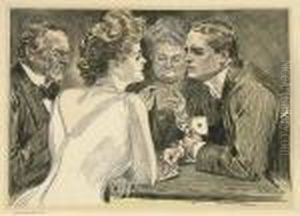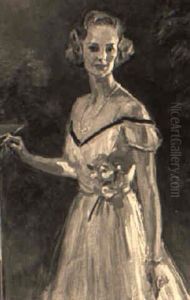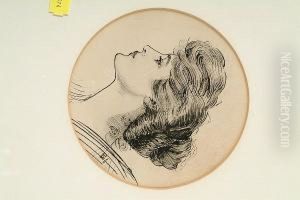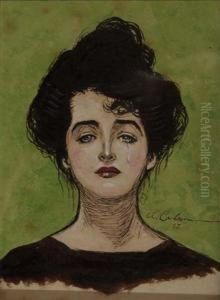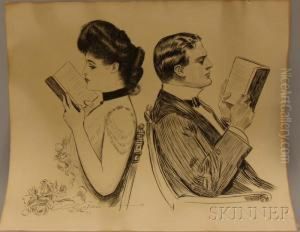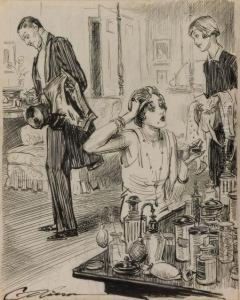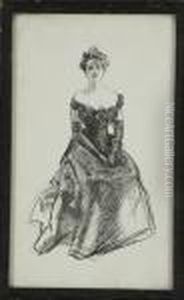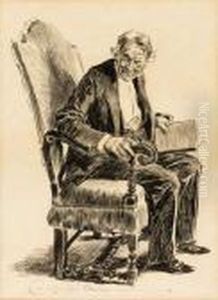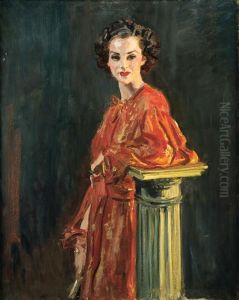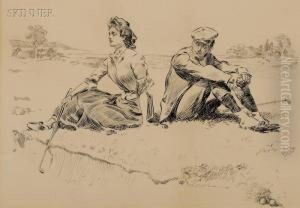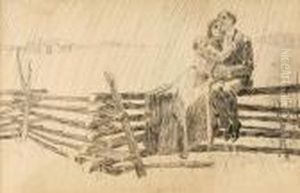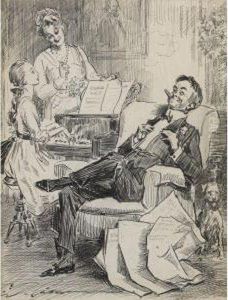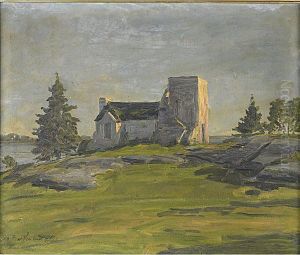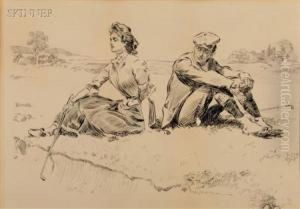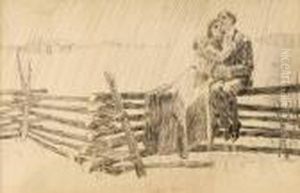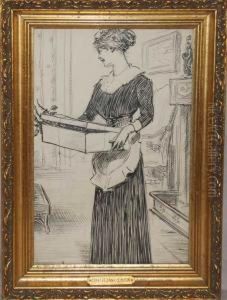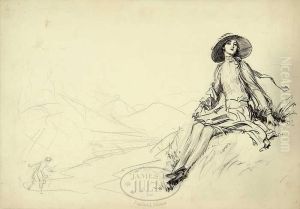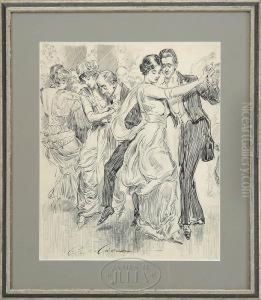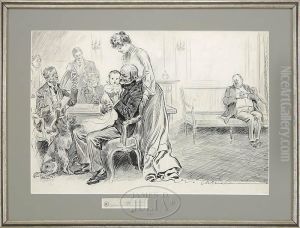Charles Dana Gibson Paintings
Charles Dana Gibson was a prominent American graphic artist, best known for his creation of the 'Gibson Girl,' an iconic representation of the beautiful and independent American woman at the turn of the 20th century. Born on September 14, 1867, in Roxbury, Massachusetts, Gibson began his career by contributing to various periodicals before eventually becoming a staff artist for Life magazine.
Gibson's early work was characterized by his sharp wit and keen observation of social manners, which he translated into his illustrations with a deft hand. His illustrations were widely celebrated for their elegance, humor, and satirical edge. However, it was the 'Gibson Girl' that cemented his place in art history. The 'Gibson Girl' was not a real person but a composite of thousands of American girls that Gibson saw as representing the ideal of young American femininity. She was tall, slender, and poised, with an air of sophistication and independence. The image had a significant influence on shaping the standards of female beauty in the early 20th century.
Beyond the 'Gibson Girl,' Gibson's illustrations also reflected the social issues of his time. He commented on politics, women's suffrage, and other contemporary topics through his work. His style was characterized by a fine line and careful attention to detail, which allowed him to capture subtle nuances of expression and movement that brought his drawings to life.
During World War I, Gibson also contributed by creating patriotic art to boost morale and support the war effort. After the war, he continued to work, although the popularity of the 'Gibson Girl' waned as new styles and attitudes emerged in the Roaring Twenties.
Gibson's influence extended beyond his own work. He owned and edited Life magazine for several years, where he was able to shape the publication's editorial voice and artistic direction. Through this platform, he was able to influence public opinion and promote the work of other artists.
Charles Dana Gibson passed away on December 23, 1944, in New York City. His legacy lives on in the canon of American illustration and in the enduring image of the 'Gibson Girl,' which continues to be a symbol of an era when America was stepping onto the world stage with confidence and optimism.
